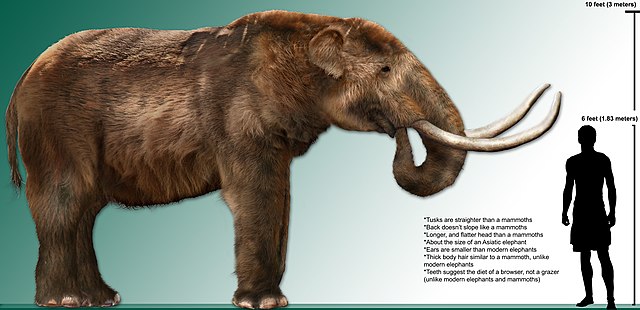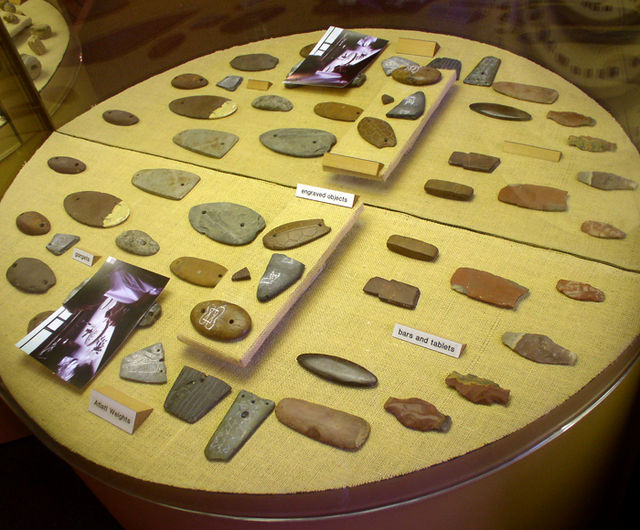Kennewick Man or Ancient One was a Paleo-Indian whose skeletal remains were found washed out on a bank of the Columbia River in Kennewick, Washington, on July 28, 1996. Radiocarbon tests show the man lived about 8,900 to 9,000 years before present, making his skeleton one of the most complete ever found this old in the Americas, and thus of high scientific interest for understanding the peopling of the Americas.
Skull of Kennewick Man. Resin cast by James Chatters
Paleo-Indians were the first peoples who entered and subsequently inhabited the Americas towards the end of the Late Pleistocene period. The prefix paleo- comes from the Ancient Greek adjective: παλαιός, romanized: palaiós, lit. 'old; ancient'. The term Paleo-Indians applies specifically to the lithic period in the Western Hemisphere and is distinct from the term Paleolithic.
The Paleo-Indians, also known as the Lithic peoples, are the earliest known settlers of the Americas; the period's name, the Lithic stage, derives from the appearance of lithic flaked stone tools.
The Mammut americanum (American mastodon) became extinct around 12,000–9,000 years ago due to human-related activities, climate change, or a combination of both. See Quaternary extinction event and Holocene extinction.
Atlatl weights and carved stone gorgets from Poverty Point




